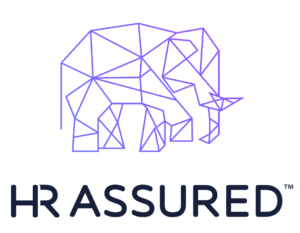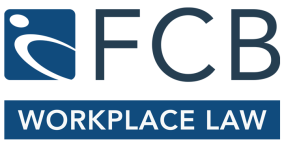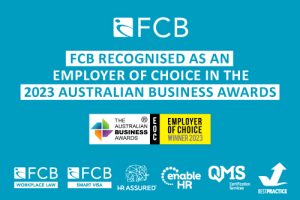Wage Theft – Keep Calm. Protect Your Brand. Audit!
May 26, 2020No one wants the mistakes they make today to become tomorrow’s headlines, to see the reputation of their company burned to the ground by a firestorm of negative public opinion. Matthew Robinson dons an asbestos suit to tell you how to fireproof your business against allegations of ‘wage theft’.
Over the last few years, the public consciousness has turned time and time again to what is seen as a growing problem with what’s now named “Wage Theft” (everyone loves a catch phrase).
Throughout 2019, it was common to see brand after brand splashed across the news and social media platforms as having underpaid their staff monstrous amounts. Politicians have been climbing over themselves to decry “wage theft” and pushing for harsher penalties on those who exploit the vulnerable.
As much as I would like to write about what the harsh new penalty regime will look like, I don’t have a crystal ball. The ultimate position on these laws could substantially change depending on the political opportunism of some Senate minorities. However, it is fair to say that in 2020 the Fair Work Act 2009 (Cth) is likely to be changed to increase penalties, perhaps even impose prison sentences, for serious and/or systematic underpayments of wages.
In years gone by, wage compliance was an HR/payroll concern. These days it’s more commonly at the front of minds of a Board seeking assurances that their house is in order, when often it is not. So, where do you start?
Wage Theft – how did we get here?
“Wage theft” is, in most instances of underpayment of wages, a highly inappropriate label. Having assisted a countless number of clients through back payment processes, I cannot think of any client who has deliberately designed a wage structure to swindle their staff. Without doubt there are many businesses who deliberately do this, but they don’t reflect the approach to business compliance taken by the bulk of Australian businesses. The overwhelming number of underpayment claims arise due to a business making minor errors that get dramatically compounded when applied across multiple employees over several years. For example: a $1/hr payroll mistake (level 2 or level 3 Award classification?) that impacts 1,000 employees over 3 years will lead to an approximately $6,000,000 underpayment liability. A big number parked next to a brand logo makes for a good headline and sells advertising on news sites via click-throughs. The more accurate heading, “HR Coordinator Makes Friday Afternoon Mistake 3 Years Ago!”, doesn’t seem nearly as interesting.
Based on my experience of over twenty years in workplace relations, the common mistakes made by companies that lead to “wage theft” can include:
- Confusion as to the interpretation and/or interactions of Award or Enterprise Agreement terms;
- Confusion as to which Award or Enterprise Agreement applies;
- Employment contracts that are misaligned with the Award or Enterprise Agreement – e.g. are penalties and overtime absorbed by a higher rate of pay, or are they separately payable?
- Ignorance of specific changes to Awards – e.g. transitional rates, changes to penalty rates;
- Failing to properly implement changes to payroll rules when a new Award term or Enterprise Agreement has begun to operate;
- Certain sites having “their rules” as to how staff are expected to work – often due to productivity-focused operations managers not properly considering labour cost triggers;
- A lack of consideration as to whether a pattern of work is that of a shift worker, or of a day worker with regular overtime?
- Rostering beyond the Award/Enterprise Agreement span of hours to meet client needs, without properly satisfying Award/Enterprise Agreement facilitative provisions;
- “You’re on a salary so the Award doesn’t apply” – this can be due to ignorance/poor advice or the staff in question being worked large numbers of hours that don’t align with the underlying labour cost calculations that set the “salary”; and
- Operational Managers who are so laser focused on customer outcomes/deliverables that they browbeat staff to fit into a business culture that emphasises the importance of “we do what’s needed to get the job done and deliver on our promises”.
There are countless other reasons and ways in which an organisation can be let down by one or more managerial errors or systems errors. Everyone makes mistakes. But due to the climate of fear and brand demolition associated with “wage theft”, it’s important that organisations take proactive steps to minimise any exposure, and to react in a considered and measured way if an issue is unearthed.
What to do & how to respond?
Historically we’ve dealt with, essentially, two types of clients in regard to alleged wage thievery:
- Clients who’ve had an underpayment exposure pointed out to them by the Fair Work Ombudsman, a Union or perhaps several aggrieved employees – in this situation the business is in a reactive mode and may be having to focus on damage limitation (Reactive Risk Issue). We’ll get to this further.
- Clients who’ve uncovered one or more questionable practices within their working arrangements or payroll and would like to explore whether there are broader issues within a department, business line or whole of business (Proactive Risk Issue).
Due to the continued media campaigns that link “wage theft” with the threat of brand destruction, we’ve seen the emergence of a third class of sophisticated clients over the last 12months – that of organisations seeking annual IR health checks to their businesses. This seems to be the growing trend, especially for organisations whose brand name can be swamped with negative & hyperbolic social media posts about alleged unethical business practices. Sometimes IR isn’t easy and can’t be explained in 260 twitter characters.
“We’ve just had 20,000 negative social media posts because Sharon foolishly believed our DC operations staff were covered by the Storage Services Award 2010 once our old enterprise agreement was replaced! Clearly she hasn’t been paying enough attention to sections 54 & 58 of the Fair Work Act!”
Sadly, most matters involving Reactive Risk Issues present a lot of difficulties in containing the damage. They require the organisation to act rapidly to assess the nature of the problem, determine the extent to which the “contamination” is limited or widespread, ascertain the availability and depth of the best sources of time & attendance and payroll data, develop a strategy (all the while responding to further developments) to try to:
- Figure out how to correct the practices that have triggered the non-compliance, including determining the operating impacts (and labour costs) that will arise by making these operational changes;
- Communicate with the Board, senior leaders, staff members and shareholders;
- Protect their brand and positioning – including liaising with specialist PR agencies;
- Retain Staff in areas of the business deeply affected;
- Consult with Unions about the problem, and manage/correct any inaccurate communications to staff;
- Respond to demands by the Fair Work Ombudsman for information, and produce records and/or interviews with managers to explain what has occurred; and
- Find the best method to analyse how much is owed, to whom and for what reasons – is the underpayment amount business-critical and, if not, how is it capable of being funded?
It can be a scramble. You’re essentially building the aeroplane while you fly it! It’s often the case that the problem keeps getting worse as the impact of the error(s) is felt in areas of the business that were unanticipated, resulting in shifts in strategy – never a good move in a crisis.
Managing a Proactive Risk Issue is generally much more measured, but it’s really only available if key levels of management take the opportunity to listen to concerns raised by staff and are prepared to ask difficult questions. If your business discovers an area of concern, then look to get the issue diagnosed as soon as possible. If the issues look potentially complex, then consider calling in some assistance.
Do NOT underestimate the benefit that legal privilege can offer to the business and any managers “involved”[1] in the design, implementation and/or supervision of the systems of work that may be defective. You cannot retrospectively create legal privilege: emails sent prior to establishing legal privilege are likely to be admissible in a future prosecution. The protection of privilege allows for greater freedom in the communications aimed at working out what has gone wrong, why, and who is impacted. Due to media and public interest in “wage theft”, we recommend that you limit awareness of your project to an extremely small number of staff. The less knowledge of the issue, the easier it is to minimise leakage. Using the protection of legal privilege, a forensic analysis can be conducted to determine the extent and specifics of the back-payment exposure. At the same time, the business can look to develop strategies on how to fix the problem. Does it require substantial changes to the industrial instruments, contracts, systems of work, and shift patterns, or the renegotiation of client service agreements that may be causing huge overtime obligations? There are many options.
If the business is concerned about the risk of knowledge of the project leaking into the public domain during the initial phases, then consider engaging a Public Relations Crisis Management specialist. That way, if the problem blows up into a Reactive Management Issue, you can try to get in front of the problem. In our experience in working in this area, we’ve found that PR specialists are a valuable resource who can prepare materials and media strategy ahead of time so you’re not having to react to the story as it unfolds in the press.
Proactively identifying underpayment risks before they become Reactive Risk Issues means that appropriate attention and thought can be applied to critical aspects of the project. You want to create a smooth transition without hostility, brand damage, regulator involvement, decline in morale and financially crippling the business. Some critical aspects in your project will include:
- On what day are you shifting from your non-compliant practices to new complaint practices, and who is responsible for consulting with the Union/staff as to these changes?
- At what point do you need to notify the ASX?
- Are you confident that your record-keeping and payroll systems can successfully operate in the new, compliant framework for business? Do you need to run testing parallel to current systems?
- How are the current and ex-employees who are impacted going to be advised of the backpay due to them, how the problem arose and how it has been fixed? This needs to be very carefully considered, and the process properly We recommend that one or more specific managers (or a team) is assigned to oversee this process, and it’s not broadly delegated out across the business, to:
- Avoid inconsistencies in messaging to staff;
- Ensure that any objections and third parties involved (e.g. Fair Work Ombudsman, Unions & bush lawyers – oh there are plenty of the latter!) are given the necessary attention; and
- Keep any Public Relations Crisis Management specialist informed of any elevated risk of the process spilling into the media.
- Do you need to provide impacted employees with financial planning advice or assistance with understanding the impacts on their tax, social security entitlements or child support payment?
- How are you going to manage any negative publicity? Do you have sufficient resources to manage your social media accounts?
There’s a lot to size up when the dark spectre of “wage theft” kicks down your office door. So, to avoid the prospect of that horrible day, foster a management culture that looks to identify potential problems and doesn’t ignore them. Consider proactive audits – even random spot audits – in areas of concern. If you can do this, your business should avoid getting drawn into a reactive model – the one where your brand gets labelled a “wage thief” by a media hungry for stories on this emerging social trend.
We’ve helped countless clients through these difficult issues, from small businesses to organisations with thousands of staff. Helping businesses to remain compliant is the cornerstone of our services.
[1] See s550 of the Fair Work Act 2009 (Cth) that is often used to impose personal liability and civil penalties on managers “involved” in the contravention

























